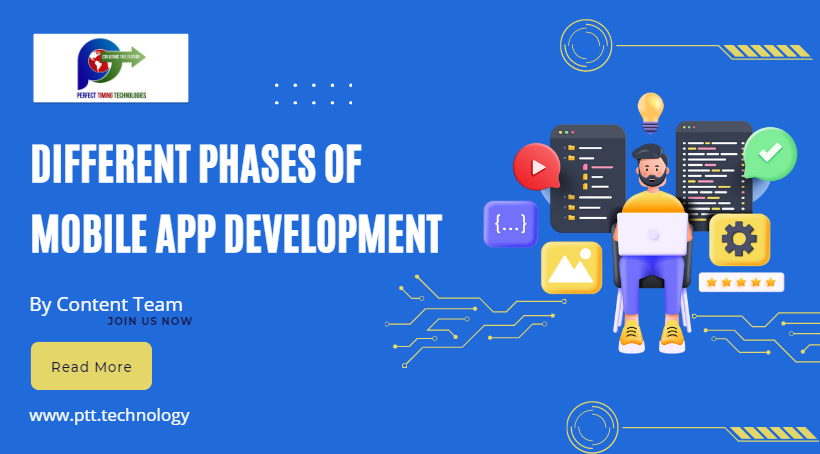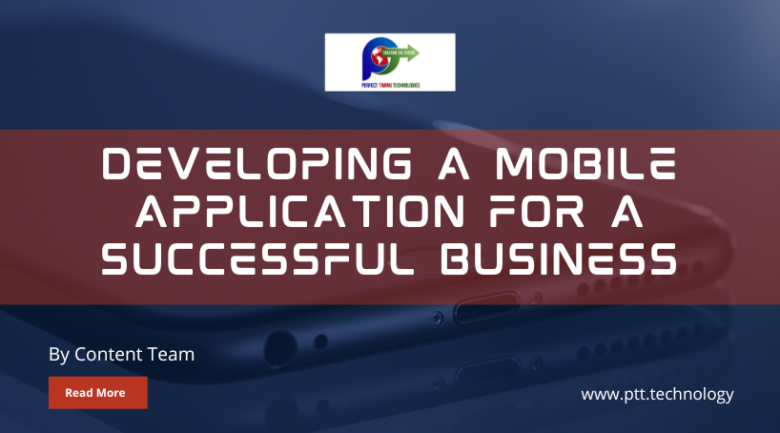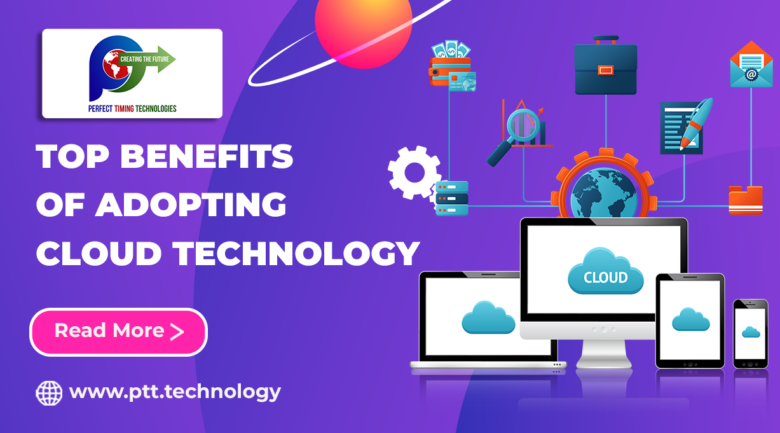
Mobile applications have become increasingly popular among businesses and customers in the modern digital world. Mobile app development can help you expand your business.
Today, we will discuss the various phases of the mobile app development process.
Different Phases of Mobile Application Development
The time and phases needed to develop mobile applications vary according to specific business needs and the development methodology adopted.
Planning Phase
The planning stage of mobile app development is a crucial phase where the app development team works with the client to define the app’s goals, target audience, features, and requirements. This phase lays the foundation for the rest of the development process, so it’s essential to get it right. Many crucial activities take place during the planning stage.
The first step in planning is clearly defining the app’s goals. Next, the target audience for the app has to be identified that help guide decisions on the app’s design and functionality.
It is essential to conduct market research to identify the competition that helps the development team understand user needs and preferences.
Then, a project plan gets created to outline the project scope, timeline, budget, and resources required to complete the project successfully. The development team defines the app’s features and requirements based on the business goals, target audience, and market research. It includes the app’s functionality, user interface, database requirements, and other third-party integrations.
That’s how the development team ensures that the app meets the client’s needs and is delivered on time and within budget.
Designing Phase
The designing phase of mobile app development involves designing the application’s user interface (UI) and user experience (UX). This phase is crucial because the app’s design impacts its success. Many steps are involved in designing a mobile application.
Firstly, Wireframing creates a basic visual layout of the app’s screens and features. Wireframes are created using pen and paper or specialized software tools. They visually represent the app’s structure and help stakeholders visualize how it will work.
Next, prototyping creates a working model of the application tested by users. It uses tools such as InVision or Sketch. Prototyping allows designers to test the app’s usability, identify potential issues, and refine the design.
User testing involves getting feedback from real users on the app’s design and usability. It provides valuable insights into how users will interact with the app and helps designers refine the design to improve usability
Once the app’s structure and functionality are defined, the visual design is made.
Next, UI animation and interaction designing take place to create animations, transitions, and other interactions that make the app feel more engaging and responsive.
Development Phase
The development phase involves the actual coding and integration of software components. This phase requires technical expertise in various programming languages and tools, and it’s essential to ensure that the app is built according to the design specifications.
There are two types of development-
- Front-end development involves creating the user interface and implementing the app’s features. It includes coding the app screens, navigation, and user interactions.
- Back-end development involves building the server-side infrastructure that supports the app’s functionality. It includes writing code for the app’s database, API, and server logic.
Following these two development steps, database integration takes place. It involves designing and implementing the app’s database schema and integrating it with front-end and back-end components.
Once the app is built, it is debugged and optimized to ensure it runs smoothly and efficiently. Bugs get fixed, code performance is optimized, and the app’s user experience is improved.
Testing Phase
The testing phase of mobile app development is an essential part of the development process that ensures that the app works as intended and meets the user’s expectations. Testing can be done manually or through automated testing tools and must be done continuously throughout the development.
Different types of testing include functional testing, performance testing, usability testing, security testing, compatibility testing, and user acceptance testing.
By conducting thorough testing throughout the development process, the development team can identify and fix issues early, which helps ensure that the app is of high quality and meets the user’s expectations.
Deployment Phase
The deployment phase manages when the app goes live to the public and is available for download on app stores.
The first step in deploying an app is to submit it to the app stores, such as the Apple App Store or Google Play Store. Once the app is submitted, it gets reviewed to ensure that it meets the app store’s guidelines and policies. It can take several days or even weeks, depending on the app store and the complexity of the app.
The next step in this phase involves planning and coordinating the app release to the public. Choosing the release date, determining the target audience, and coordinating with the app store ensure a smooth app launch.
Marketing and promotion are essential to ensure the newly launched app gets the desired attention from its target audience.
With careful planning and execution, the app is launched successfully and meets the needs of its target audience.
Maintenance Phase
The maintenance phase of mobile application development is an ongoing process after the app is released to the public. It involves monitoring the app’s performance, fixing bugs and issues, and updating with new features and improvements. This phase involves analyzing bug reports and using debugging tools to identify and fix the underlying issues.
As new devices, operating systems, and platforms are introduced, it’s necessary to ensure that the app remains compatible. It also involves testing the app on new devices and updating the code to ensure compatibility.
During this phase, the application is monitored for security vulnerabilities, and new security measures are implemented as needed.
Constant monitoring and improving the application during the development process ensures that the app remains relevant, competitive, and user-friendly.
Hire the best mobile app developers to ensure a successful application launch. To know more contact us today.







